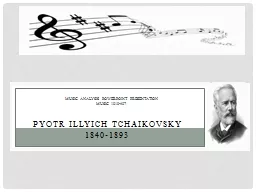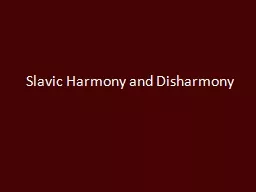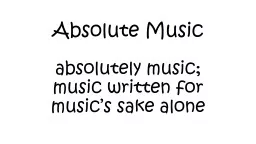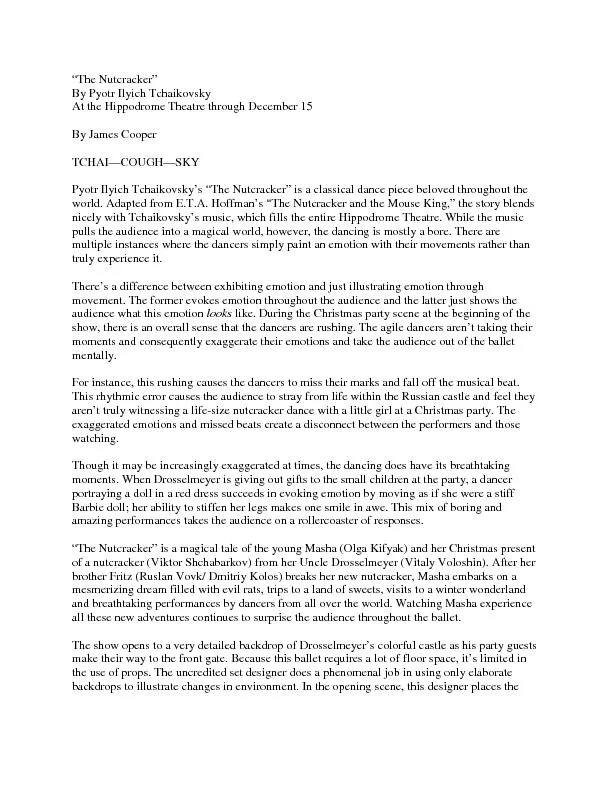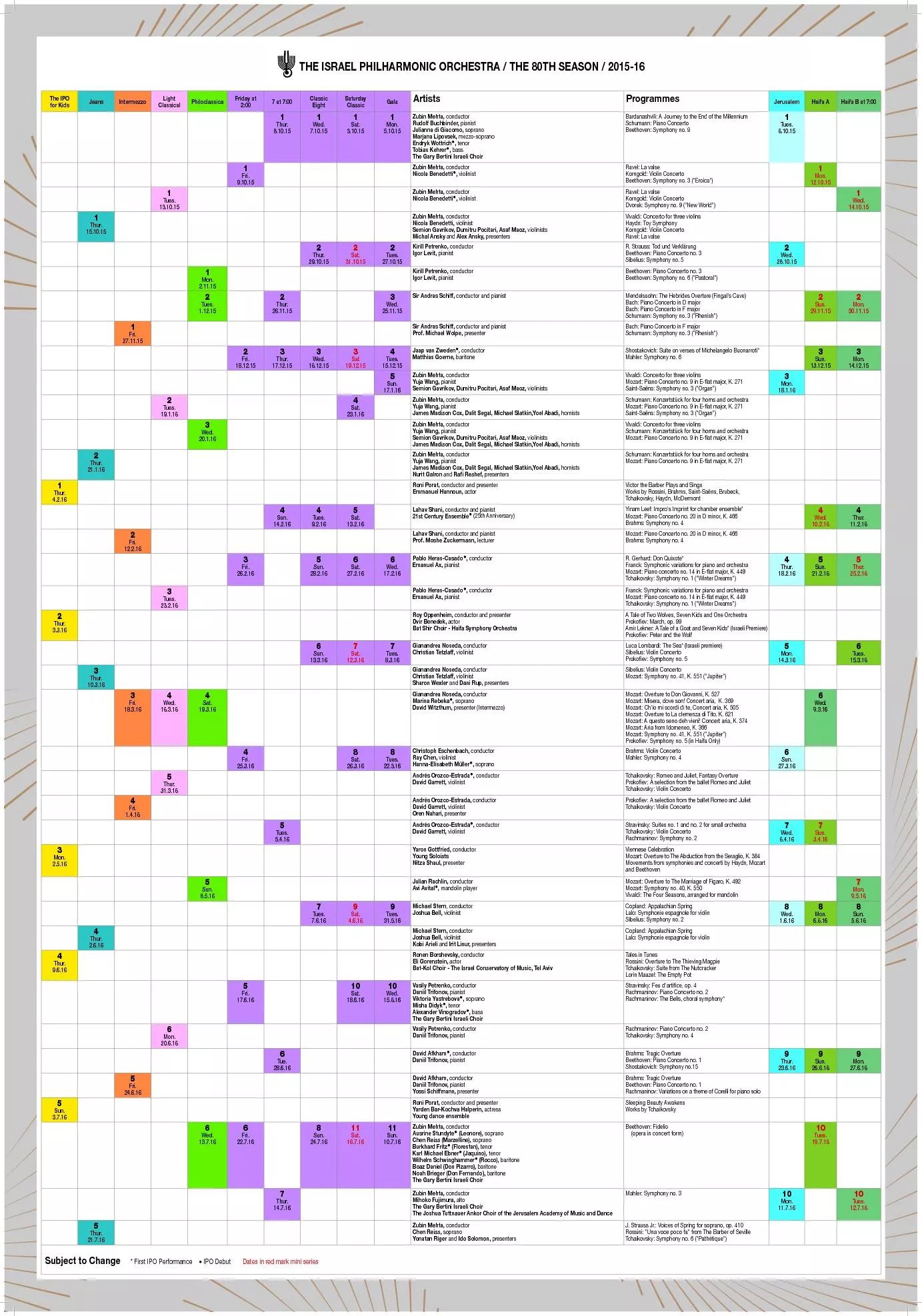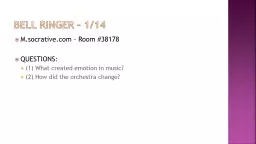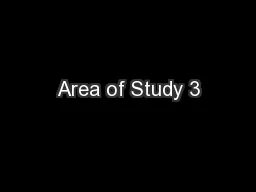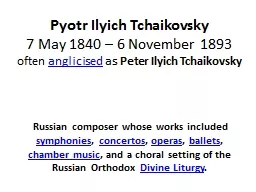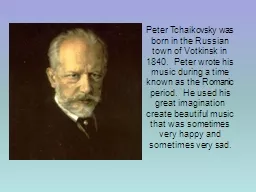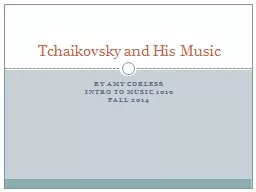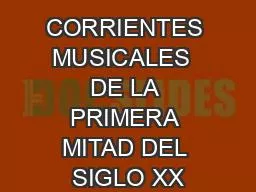PPT-Pyotr Illyich Tchaikovsky
Author : karlyn-bohler | Published Date : 2018-02-18
18401893 Music Analysis PowerPoint Presentation Music 1010407 Pyotr Illyich Tchaikovsky was born 7 May 1840 and grew up in Votkinsk Russia in what is today part
Presentation Embed Code
Download Presentation
Download Presentation The PPT/PDF document "Pyotr Illyich Tchaikovsky" is the property of its rightful owner. Permission is granted to download and print the materials on this website for personal, non-commercial use only, and to display it on your personal computer provided you do not modify the materials and that you retain all copyright notices contained in the materials. By downloading content from our website, you accept the terms of this agreement.
Pyotr Illyich Tchaikovsky: Transcript
Download Rules Of Document
"Pyotr Illyich Tchaikovsky"The content belongs to its owner. You may download and print it for personal use, without modification, and keep all copyright notices. By downloading, you agree to these terms.
Related Documents

